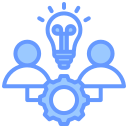Decision-Making, Feedback Loops, and Conflict Navigation
Define who drives, approves, contributes, and informs before debates begin. Posting the model next to your agenda prevents circular discussions, protects timelines, and reassures specialists their expertise matters even when they are not the final approver.
Decision-Making, Feedback Loops, and Conflict Navigation
Imagine your project has failed, and list plausible causes from each discipline’s perspective. Invite a rotating red team to challenge assumptions. These rituals uncover blind spots early, saving precious time and fostering genuine psychological safety.


